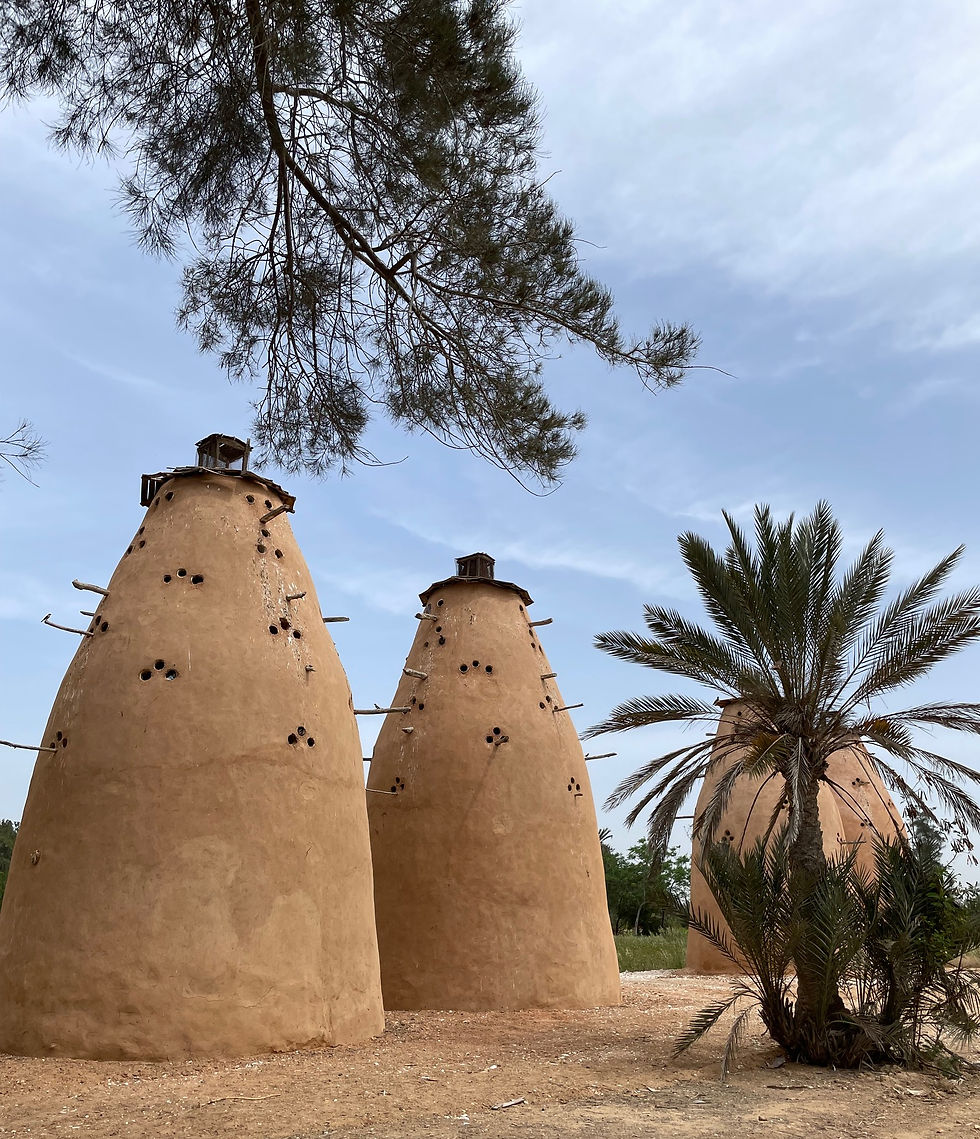Anthroposophy, Biodynamic Farming, and a week in Egypt
- Lena Dente

- May 19, 2024
- 4 min read
Updated: May 23, 2024
Thanks to a recent work trip, I had the amazing opportunity to visit and stay at a biodynamic farm outside of Cairo. After spending a week there learning, eating, and living within the rhythm of the farm, I have become a real fan of the biodynamic movement.

An oasis in the desert
I landed in the middle of the night in Cairo and drove straight to the farm northeast of the sprawling megacity. Cairo at night gives you the impression of one that is never at rest, with billboards obnoxiously blinking and cars driving and people walking around. It smelled dry - if that is even possible. Driving along 8-10 lane concrete highways, with half-finished buildings left and right, the phrase that came to my mind was languishing chaos. The road became more and more rural and I started seeing little fires everywhere and the smell of burning organic matter permeated the air. A haze hung heavy even in the night air. An hour or so later, when we entered the farm compound, the air suddenly smelled humid and earthy. The temperature went down. I could hear birds and the smoky haze that we drove through was gone. In the morning in sunlight, I was amazed to see that the grounds were green, with healthy trees and beautiful flowering shrubs. The negative impression from the night before was starting to fade.
This was possible thanks to the biodynamic farming methods that turned a desert into an oasis.
Origins of biodynamic
Biodynamic farming and the anthroposophy teaching of linking spiritual and scientific approaches together traces their origins back to Rudolph Steiner (1861-1925). Steiner was a scientist and philosopher. Steiner advanced the view that a farm and farming processes could actually be a self-sustiaining organism, working on the principle of circularity and not as a one way process. This extends beyond the soil, crops and animals on a farm to include the families and communities involved in farming. He was a visionary regarding social and environmental responsibility. (To read a bit more about him, please have a look at the Biodynamic Association website.)
I consider myself a conscious consumer and try to buy local, organic and socially responsible whenever I can - even when this means it is more expensive. I don´t think it should be more expensive, because products that are organic create a value for the soils and farms that they come from - but we can discuss that more later. What I learned after a week on the farm, is that organic is not biodynamic.
Going beyond organic
Demeter is one of the first eco-labels that identifies biodynamic products. If a product has a Demeter label, it means that is has gone beyond the organic requirements and meets international standards for producing and for processing sustainable food. In the EU for example, a producer can become organic certified after converting to approved practices. Depending on what should be certified organic, this can take 12 months to 3 years.
According to the controlling body for Germany, the criteria that must be upheld include:
no mineral nitrogen fertilisers
no synthetic pesticides,
no genetically modified organisms (GMOs),
a closed nutrient cycle through land-based animal husbandry,
diversified crop rotations and
animal-friendly husbandry practices
It can take 3 years to convert and achieve a biodynamic or Demeter certified farm or product. This requires that a farmer additionally
creates the farm as a closed-loop system - without buying feed or fertiliser externally and without producing beyond its natural capacity
creates and uses compost on the farm and views this as a key to soil health
uses crop rotation to optimise land health and use
employs an astronomical planting calendar (optional)
does not dehorn their cattle

While organic and biodynamic are similar and both positive, the emphasis on the ethical and holistic system nature of a farm is what I found most impressive about the biodynamic approach. For example, the farm I visited prioritised the well-being of the workers and community that worked together to make the farm function. There was a real sense of family and shared responsibility. There were schools for the children of the workers and for children from the surrounding community - including girls and disadvantaged children.
According to UN Women, rural Egypt is home to 58% of the Egyptian population. Data from 2014, shows that women in rural areas went to formal school for approximately 4.5 years. Considering that the SDGs also call for gender equity in terms of education and economic engagement, including educational opportunities on the farm goes a far way to start changing social norms and expectations - which can have an impact beyond the borders of the farm itself. This is truly a systemic approach.
I had an opportunity to see some of the produce being harvested, witnessed the kids going to school, and ate the food from the farm. I enjoyed a Bedouin evening under the stars, showcasing local culture and music. Importantly, I met and spoke with the people who worked on the farm and who were learning to become new biodynamic farming ambassadors. It was a fantastic learning experience to see how farming can be a force for good when the ethics, environment, and the social aspects of farming are approached systemically. This is not farming for profit, it is farming for the future. And it is truly transforming communities for the better.


Comments